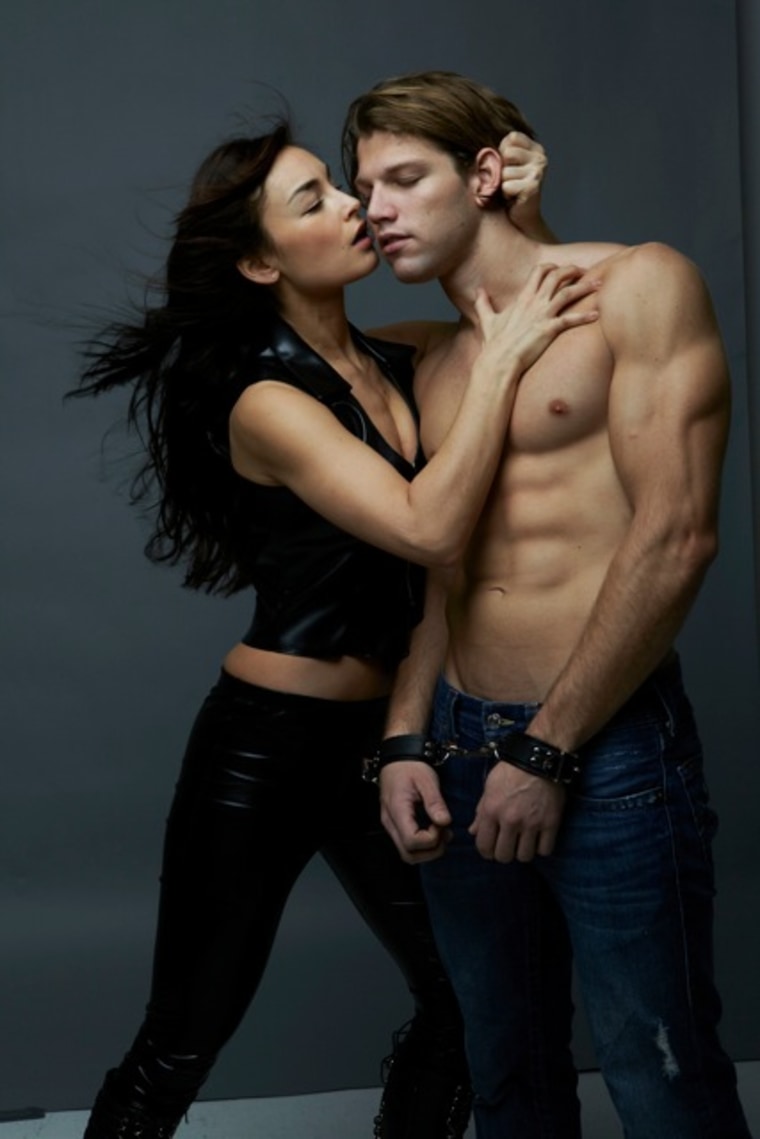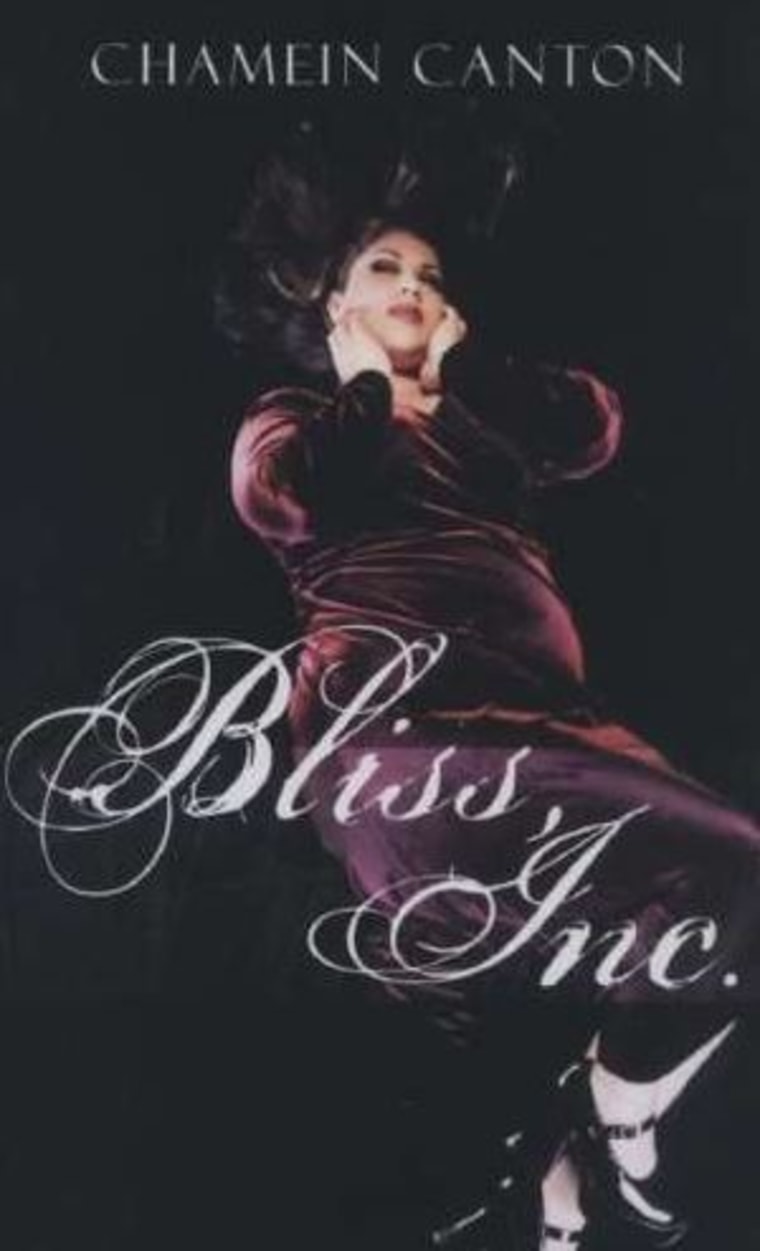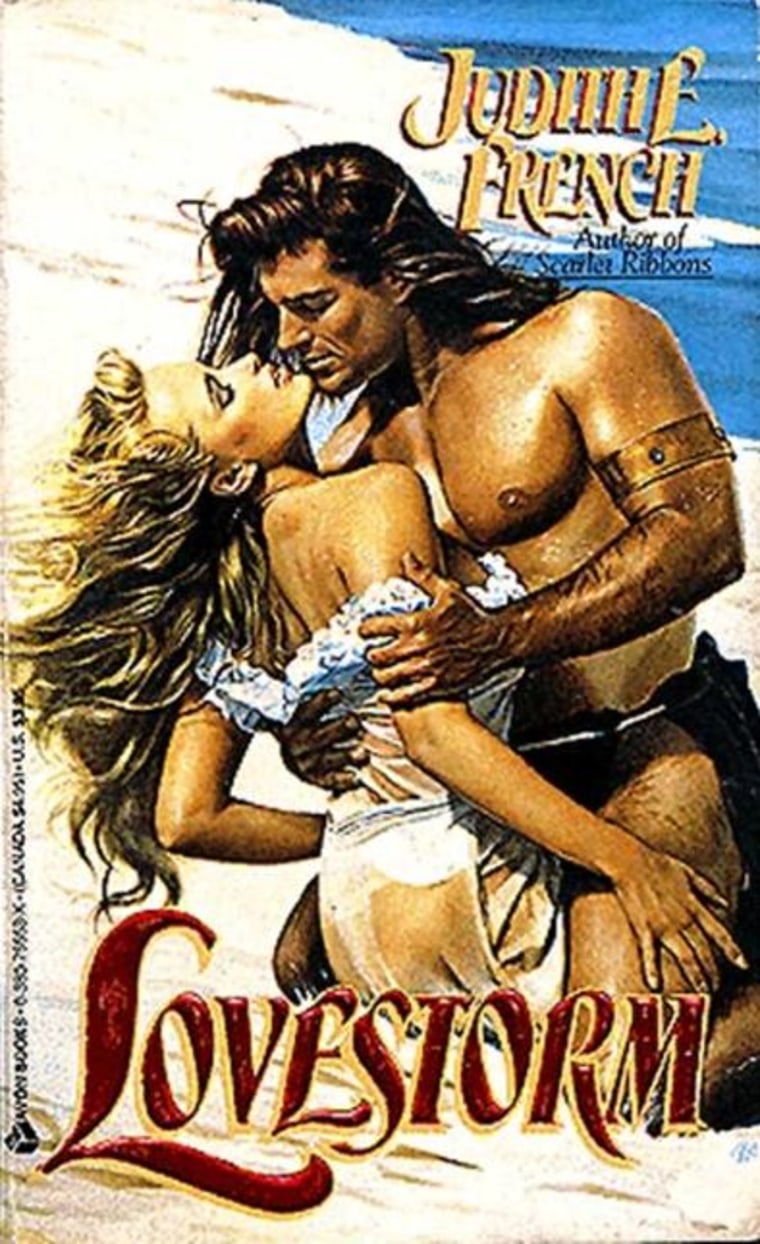Sorry, Fabio: Your glistening pecs and trusty white stallion are no longer needed.
Today’s romance novel covers are just as likely to feature a woman in fatigues carrying a machine gun as they are a hirsute hunk.
The $1.36 billion per year romance novel industry, which caters primarily to women 31 to 49, offers a diverse array of storylines and themes — such as those with vampire-related plotlines, or set in war zones or paranormal settings — influenced by current events and pop culture. With this variety, the “bodice-rippers” of yesteryear are no longer representative of the genre, publishers say, and covers are getting a modern makeover.

“The era of Fabio is long, long, past,” said Sarah Wendell, a romance novel fan who runs the extensive blog Smart Bitches Trashy Books.
Harlequin, for many, is synonymous with the romance genre, which comprises about 80 of the 110 covers it publishes monthly. Early covers featured illustrations, while more contemporary books use photographs that are merely retouched by illustrators.
“The evolution of the covers goes along with the evolution of our brand and what readers want,” said Michelle Renaud, a spokesperson for Harlequin, which started publishing romance novels in 1949. “In the ’40s and ’50s, the covers had a film noir feeling, and women were represented in a supporting role — men took the lead. In the ’70s, there was a feeling of escapism and fantasy. Then we showed men and women in more of a partnership. Today, there are much stronger heroines.”
Butt-kicking babes
More contemporary romance novels are featuring fearless female leads in many forms, and their covers are showcasing that by having a woman alone on the cover or portraying her dominating a man.

“The variety of heroines is breathtaking,” says Pamela Regis, professor of English at McDaniel College and author of “A Natural History of the Romance Novel.” “They are everything from vampire hunters, military women, kickass heroines all the way to women living and working hard in Amish country.”
Shirley Green, a New York photographer whose studio is dedicated to taking pictures for romance covers, says she’s seen that change in the last 10 years.
“In the past, I shot a lot of covers for historical romances that featured [female] models who were fair, blond, and petite with finer features,” said Green, who does about 40 covers per month. “Now it’s more common for me to shoot a woman dressed in fatigues with a flamethrower on her back.”
Green says that current events and entertainment trends are a big reason for the change.
“When the Iraq War first started, I was shooting a lot of military-themed covers; Now, thanks to the popularity of ‘Twilight’ and ‘True Blood,’ I’m doing a lot of vampire-themed shoots,” she said. “So the biggest shift for me in terms of style is that these days it’s a lot more hardcore — it’s edgier, sexier, with leather and high heeled boots.”

Covers are portraying women's emotional strength, too.
“Nobody gets their bodice ripped off anymore,” laughs Deborah Schumaker, the executive editor for Genesis, a publisher of African-American romance novels. “Even when the novels take place in exotic locales, we show women as they really are — working, and not made whole just by the man.”
Schumaker insists on showing “real” women, saying that even though the books are fantasy, readers enjoy them when they are grounded in reality. The 2007 Genesis book “Not His Type,” by Chamein Canton, featured a plus-size woman on the cover, as did the follow-up, "Bliss, Inc."
“We were one of the first publishers to do that,” said Schumaker. “We got a huge response from our readers and now Chamein is one of our top-selling authors.”
Men are still eye candy
Men are still featured on covers, but often on their own and in a way that’s approachable.

“It’s more of the guy next door look, rather than the Fabio beefcake look,” said Green.
Many publishers feature a headless man or couple, showcasing just their lusty bodies. “Readers don’t want to be told what the hero or heroine looks like,” said Wendell. “They want to control that with their imaginations.”
Some of Harlequin’s most popular books feature only men — allowing readers to see themselves as the story's female lead.
“Women love seeing a sexy, good looking man,” said Renaud, Harlequin’s spokesperson. “The men on the cover have to be aspirational and have an above-average look — that’s one thing that hasn’t changed. You can have a cowboy or man in a suit, but they’ll still have similar qualities — an all-American alpha male with a heart of gold.”
It’s impossible to talk about guys on romance covers without Fabio Lanzoni, who started modeling for covers in 1980 and quickly became the single-moniker face of the genre, at least in the mainstream, for nearly two decades. Most remember him for the clinch, that iconic, “I need you now!” embrace that has long been the hallmark of romance novel covers.
He recalls the clinch fading out as early as 1986.
“In the beginning it was great; I always got to work with beautiful girls” he tells TODAY.com. “All of a sudden they tell me, ‘Fabio, no more girls.’”
His explanation? “Women buy those books, and women don’t want to see another pretty girl on the cover, they just wanted to see the guy. So I’d be by myself or they would put the girl in the background,” Lanzoni said, adding that, over time, he was asked to show “more and more flesh.”
Clinch comeback?
Though the clinch may be going the way of the black-and-white TV, e-books may be making them retro chic.
Online e–book retailer At All Romance saw its sales double last year, according to the New York Times, and its most popular books were also its raciest.
Harlequin has also seen enormous growth with its digital imprint, Carina Press. “We have women of all ages embrace our digital books,” said Renauld. And though some women may read romance novels on tablets for fear of getting spotted in public, Renauld believes there’s no such shyness.
“With the younger demographic, they’re reading the books digitally, but then we’re seeing them going to the store and actually picking up the book,” she added. “Romance covers are now like an accessory — a fun statement to make.”